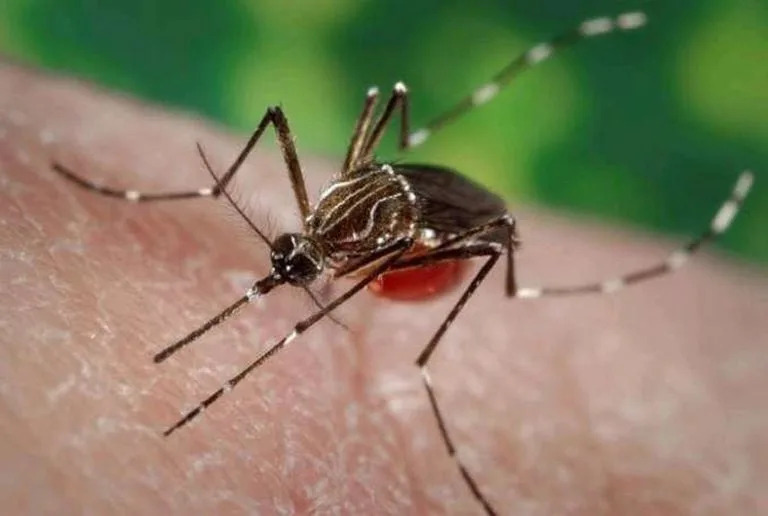
With the weekend rains, the temperature has dropped in the Buenos Aires metropolitan area. But is this drop in temperature enough to put an end to mosquitoes?
According to the National Ministry of Health, so far in 2024, 163,419 cases of dengue have been registered in Argentina, and 129 people have died from the disease . The accumulated cases represent up to six times more than what was registered in the same period of the previous season, and almost 10 times what was registered in the 2019 and 2020 season.
Laura Harburguer, researcher at the Institute of Scientific and Technical Research for Defense and member of the National Council of this institute, points out that the Culex pipiens mosquito , which is usually brownish and is more present in green spaces, is not the one that transmits dengue. –, is capable of surviving at lower temperatures, however, the adult Aedes aegypti –transmitter of dengue– usually dies after four or five days of temperatures below 15 degrees .
“First of all, it is important to clarify that these are biological organisms and nothing is exact. They seek to survive and adapt to the environment. Not everyone is going to die because there are five days of 15 degrees, although the largest percentage will die. It is important to highlight this caveat because their objective is to survive and reproduce. As for Culex pipiens, it is estimated by laboratory studies that it survives temperatures of up to 10 degrees . In fact, it can be found in southern provinces of the country. But, on the other hand, the eggs of Culex pipiens are not resistant like those of Aedes aegypti because they need to be above water, without water, they die. Therefore, in Culex pipiens the form of resistance is not the eggs, but the larvae and then the adults,” warns the specialist.
Harburguer points out that studies carried out in Buenos Aires showed that it takes, on average, four to five days with temperatures below 15 degrees for the adult to die . But the problem does not end with the adult, the larvae and eggs should also die. But, for this to happen, temperatures would have to be much lower.
The Aedes aegypti deposits its eggs on the surface of the water, leaving them on a rough wall, such as those of any container that accumulates water or a hole in a tree. This way of depositing them is different from what other species do that release their eggs directly into the aqueous environment, such as in a puddle or a ditch. Those eggs then transform into larvae, then pupae, and later into adults.
“In the case of the larvae, it is difficult to estimate at what temperature they die because when they are in the water they are at a different temperature than the ambient temperature. The larvae resist low temperatures, but their cycle becomes longer with the cold. It takes a larva about 10 days to reach adulthood in summer conditions, with an average temperature of 25 degrees. But when the temperature drops it takes a month or two months, but it is difficult for the larvae to die from the cold,” describes Harburguer.
No comments:
Post a Comment